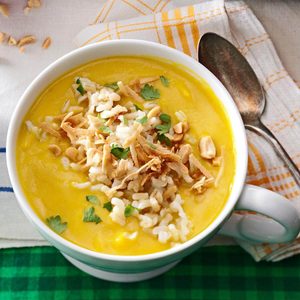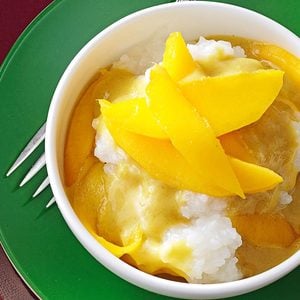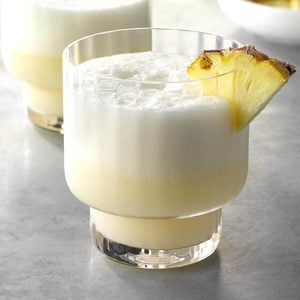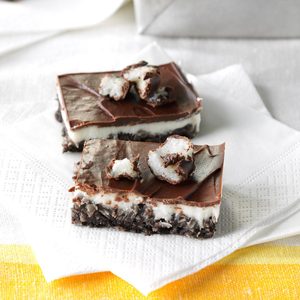Which should you choose at the grocery store: coconut cream or coconut milk? The full-fat or "lite" can? Here's a closer look at when to use each product.
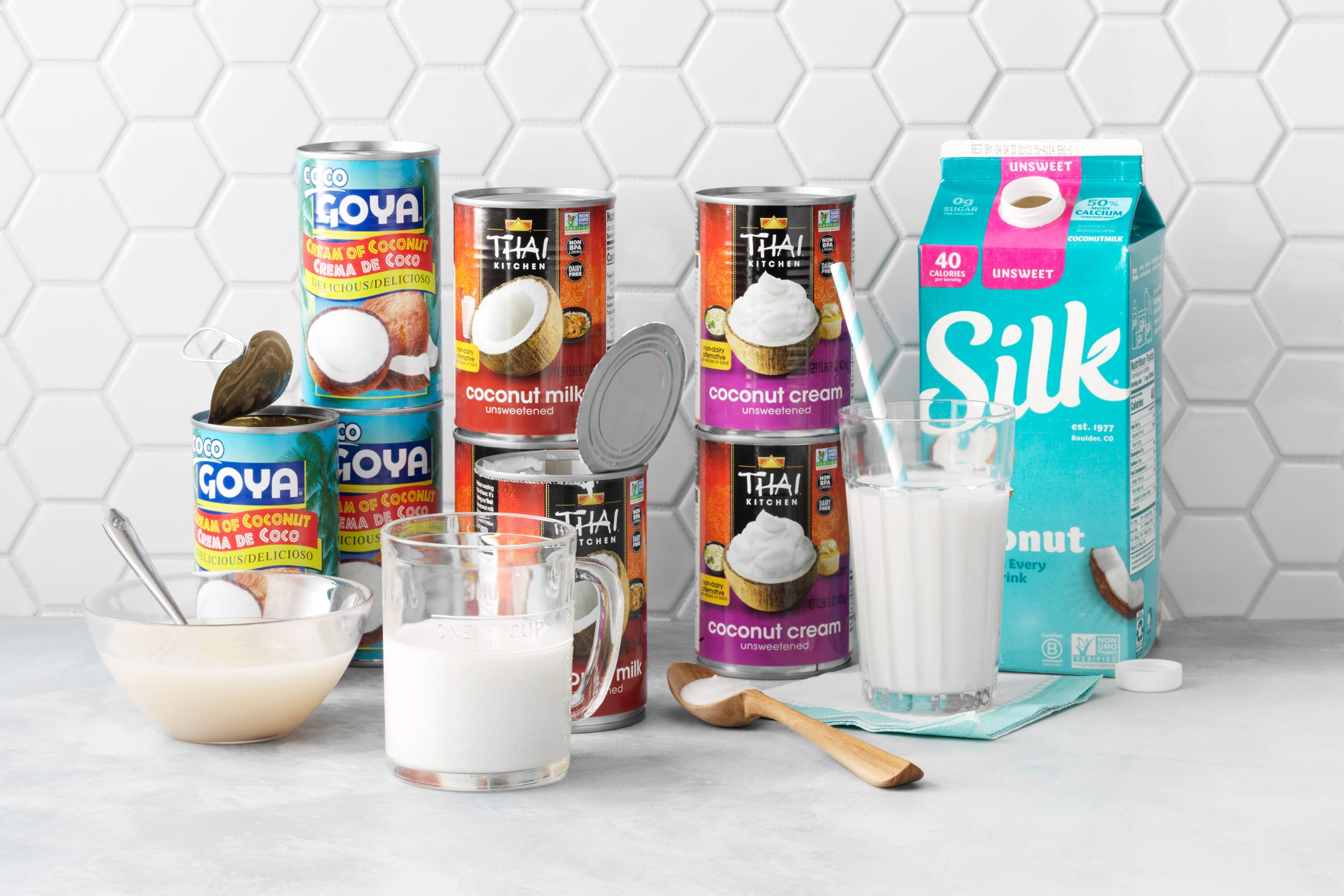
Coconut Cream vs. Coconut Milk: What’s the Difference?

Years ago, I went hiking through the jungle in Belize. To keep our energy up, the tour company had prepared a traditional Belizean lunch: stewed chicken with rice and beans. The meal was amazing, but I was shocked to find that the rice was the stand-out star. When I asked the cook how she made it, she told me it was a combination of white rice and coconut milk.
That coconut rice really got me wondering. Sure, I had experienced coconut milk in rich curry and coconut cold-brew lattes, but if it could be used to elevate rice, the possibilities were endless. I wanted to stir this tropical elixir into soups, turn it into a marinade for chicken, use it to simmer mussels and anything else I could think of!
When I got home, I ran to the grocery store to start experimenting—but stopped short when I saw all the choices. From coconut cream vs. coconut milk to full-fat or “lite” options, I didn’t know where to start. The difference between these products is subtle, but it really does matter which one you choose.
On This Page
Difference Between Coconut Cream, Coconut Milk and Cream of Coconut
What Is Coconut Cream?
Coconut cream is the same thing as coconut milk—coconut meat blended with water—but it contains less water.
While coconut milk is thin like cow’s milk, coconut cream is thick like whipped cream. You can find this fat-rich cream floating on the top of any canned coconut milk, or you can buy it in a dedicated can. It’s great for making dairy-free whipped cream or coconut ice cream, but it can also be used for savory recipes like curries.
Substitutes for Coconut Cream
- Make your own by simmering one part water with four parts shredded unsweetened coconut. Once the mixture comes to a boil, remove the pot from the heat and let it sit until it’s room temperature. Strain out the solids and refrigerate the coconut cream overnight to help it set up.
- Chill a can of full-fat coconut milk in the refrigerator overnight. This will help the thick cream harden on the top, making it easier to skim off the layer of coconut cream. Stop when you reach the liquid layer beneath and reserve the thin milk for another use.
- Use evaporated milk, a concentrated milk product that’s thick and rich like coconut cream. For desserts, use sweetened condensed milk instead.
What Is Coconut Milk?
Coconut milk is unsweetened coconut meat that’s been simmered or blended with water. The mixture is strained to produce a smooth, milky-white liquid that has a similar consistency to cow’s milk. The lightly sweet flavor makes coconut milk a perfect choice for adding to smoothie recipes or your morning coffee, but we also love cooking with it. It’s thicker and richer than most alternative milks, and it has enough fat content to simmer without breaking, adding a nice body to soups, stews and sauces.
Coconut Milk in a Can
If you plan to cook with coconut milk, choose the variety in a can. It contains more fat and typically only has one added ingredient as a stabilizer (guar gum). The cans also have a layer of coconut cream on the top, which can be mixed into the thinner milk or scooped off and saved for another use. Opt for full-fat cans instead of “light” or “lite” options, which have been watered down to reduce the fat content.
Coconut Milk in a Carton
Coconut milk in a carton is generally found in the refrigerated aisle and it’s best for raw applications. Depending on the brand, boxed coconut milk may be fortified with vitamins and added calcium, making it a good choice for drinking straight, adding to coffee, blending into smoothies or using for cereal. Like the “lite” can option, boxed coconut milk has been watered down to make it thin enough to drink, so it has less fat but contains additional stabilizers like xanthan gum and carrageenan.
What Is Cream of Coconut?
Be careful when shopping for canned coconut cream, because you may accidentally pick up a jar of cream of coconut instead. This product is still made with coconut meat and water, but it’s blended with sugar to make the mixture very sweet. It’s popular with bartenders at tiki bars because it has an ideal flavor and consistency for blended drinks like piña coladas.
To use cream of coconut in desserts instead of coconut cream, reduce the sugar in the rest of the recipe.






















